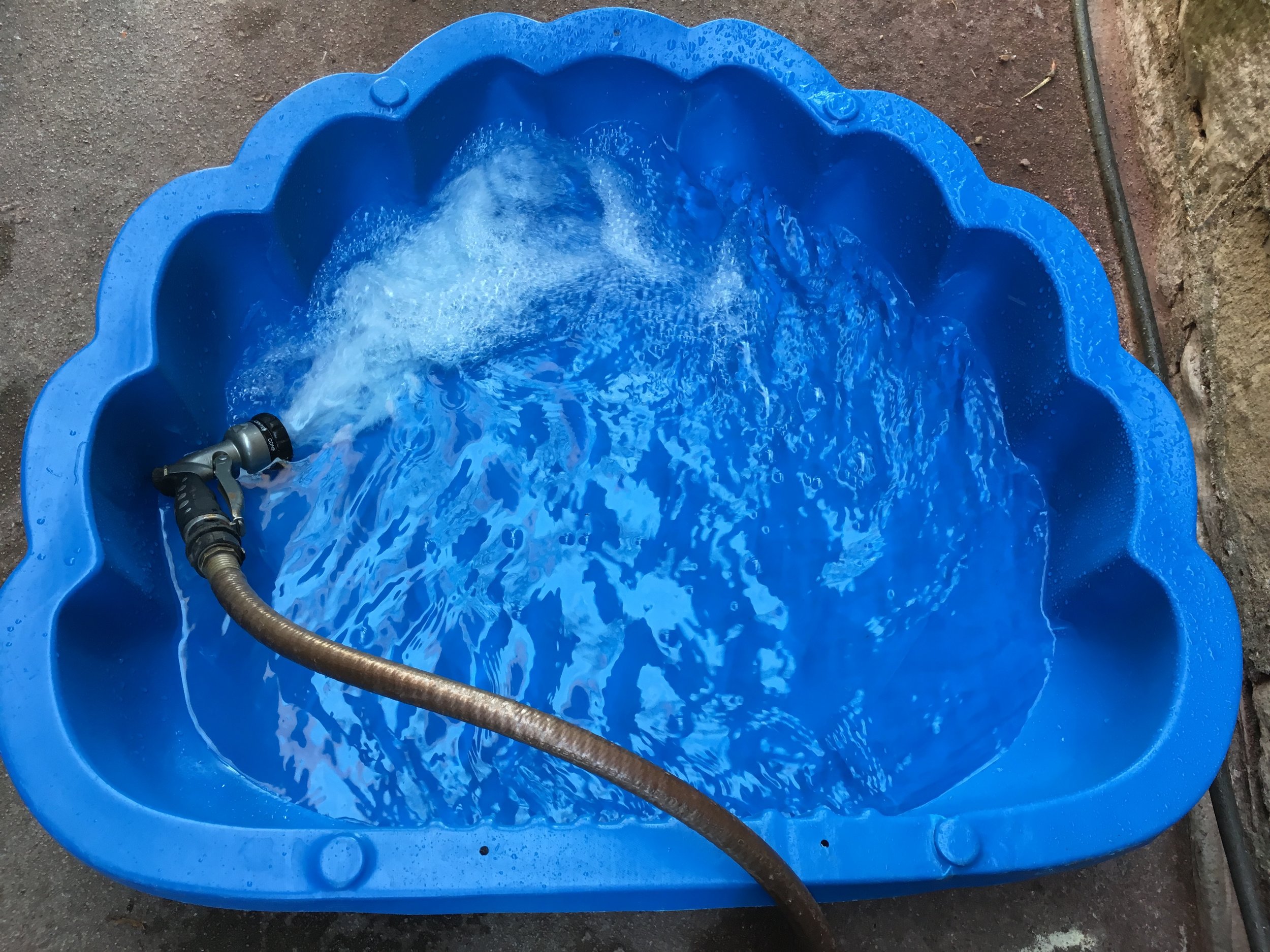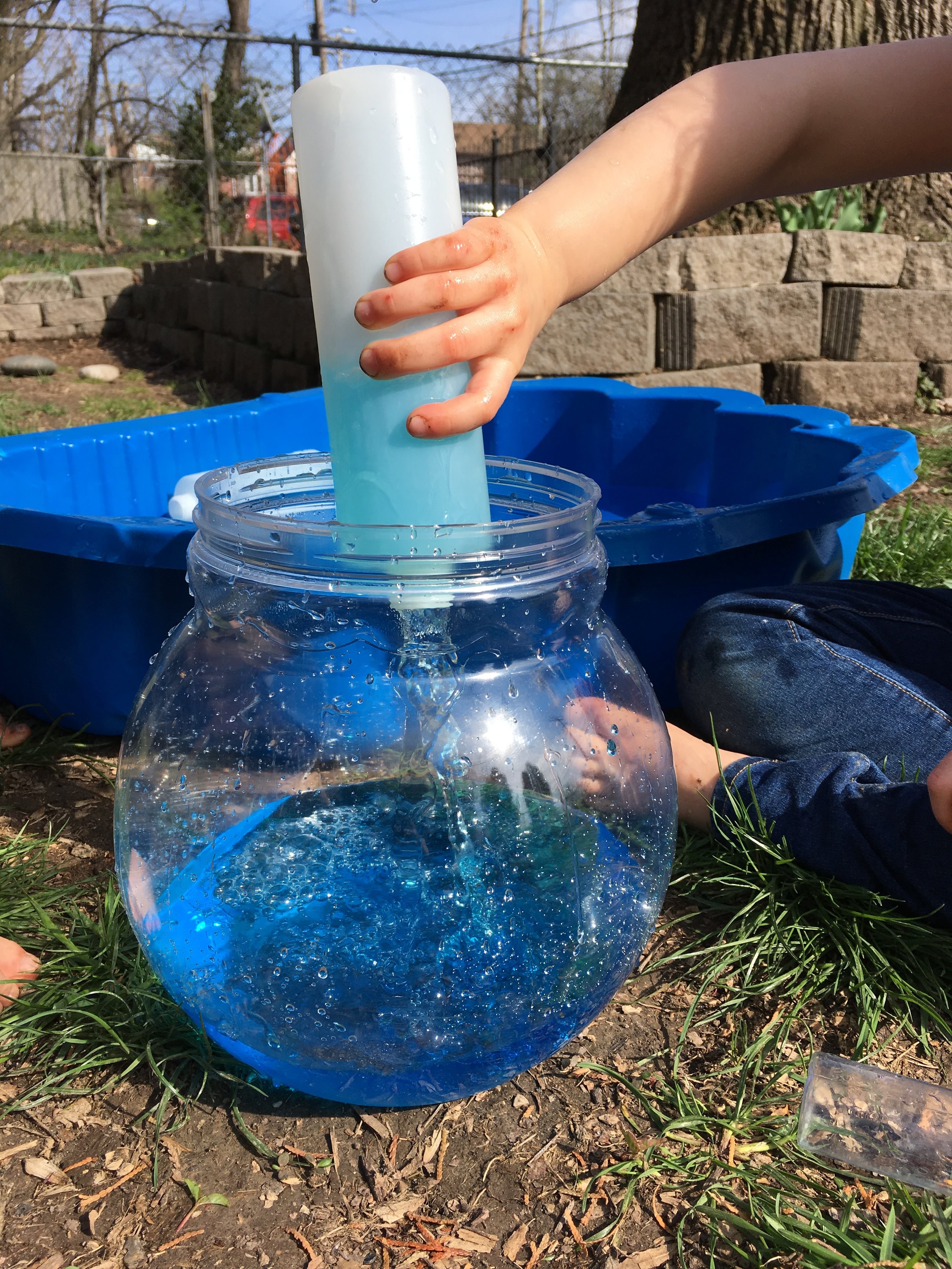On our drive to Grandma and Grandpa’s house we pass a metropolitan river, which is really part of a sewer and storm water collection system. After a winter of heavy snow, and a few spring rain storms, the water level rises each day. Today it is unusually full. My children always seem to notice the river and it’s ever changing depth. While driving along this urban oddity we notice the water (or lack of) and talk about it.
These conversations about empty, almost full, and full, remind me how important it is to talk about places in your community and then use those conversations to connect learning experiences back at home and school. Also, empty and full are beginning concepts related to the child’s developing understanding of measurement.
PLAYFUL INVITATION
1. Prepare: Gather recycled containers, food coloring and water.
Observe the child throughout the interaction. Use the Invitation to Play Documentation Tool to collect data.
2. Invite: I wonder if you can fill this BIG container until it is completely full.
3. Play: Encourage the child to use the small containers to fill one large container. Notice how moving water using the small container takes time and slowly changes the water level in the large container.
Talk about depth. Use terms Empty, Full, Half Full, Completely Full, etc.
Count the number of pours it takes to fill the container.
Lift the large container and feel the weight. Discuss.
4. Reflect and Assess: What did the child notice about the water? What words did he/she use to describe the water? Did he/she naturally use math language? How did he/she measure attributes while playing?
Relate this experience to something in the child’s life. Whether it is a local river, a bath tub, or just a drinking cup. All children have experience with water, and may already know what happens when something becomes too full.
Ready: Water play is beneficial at any age or stage of development.
Extend: Continue talking about volume and capacity in everyday situations. Find items in the home that are empty and full.
Finally, read about flooding and learn more about what you can do to conserve water.
MATH LANGUAGE
Attributes- characteristic of an item. Examples include color, shape, texture, size, type, number, etc.
Capacity- the maximum amount something can hold.
Measurement- the process of measuring the size, length, weight, volume and other attributes of an object.
Volume-The amount of 3-dimensional space something takes up.








